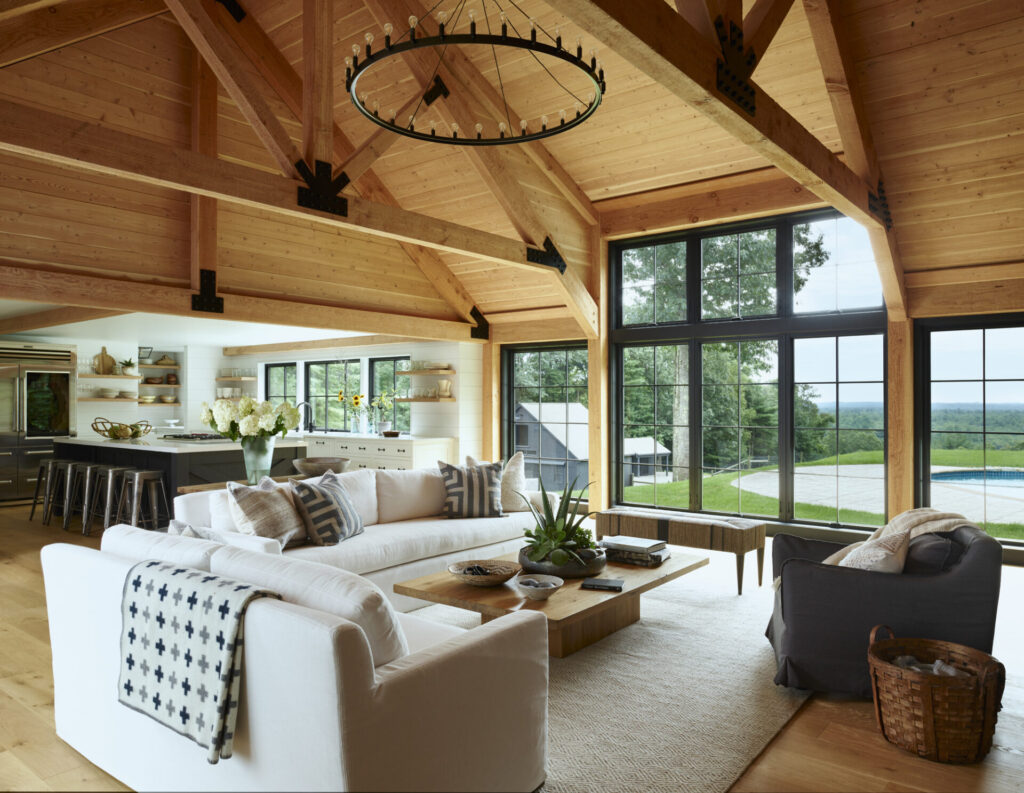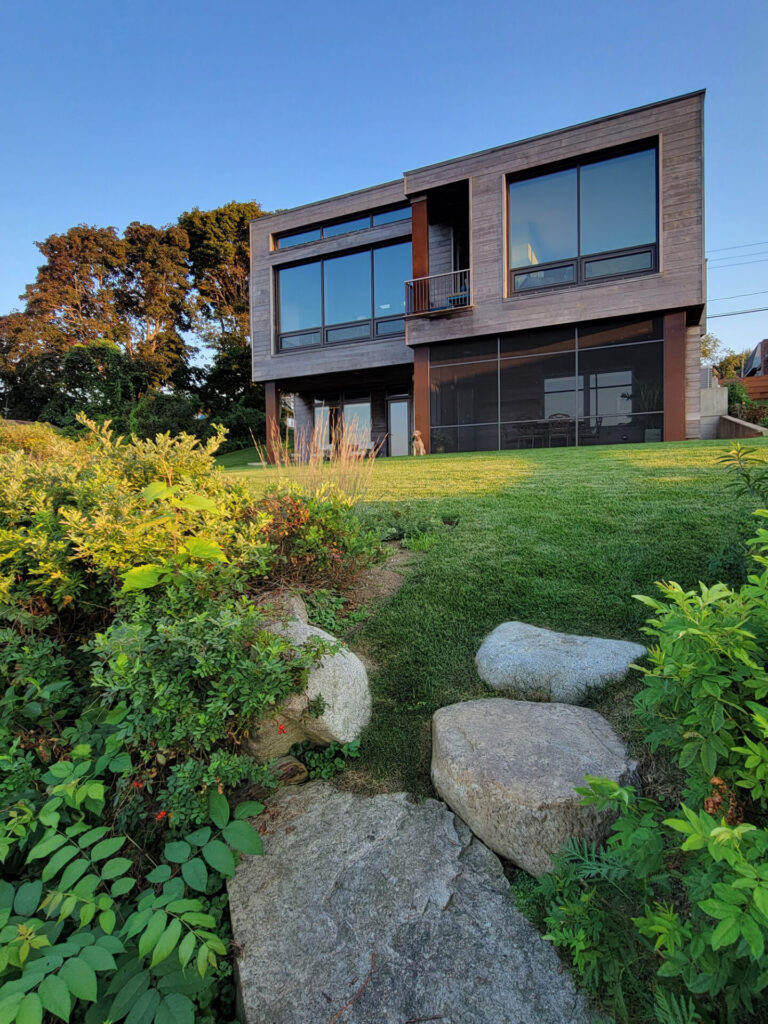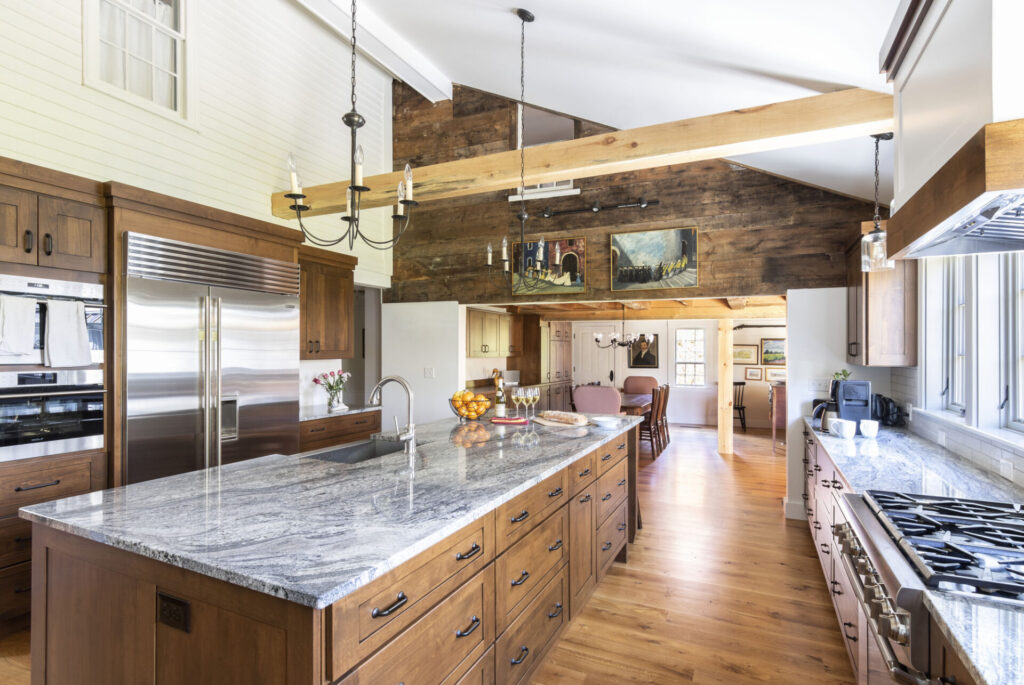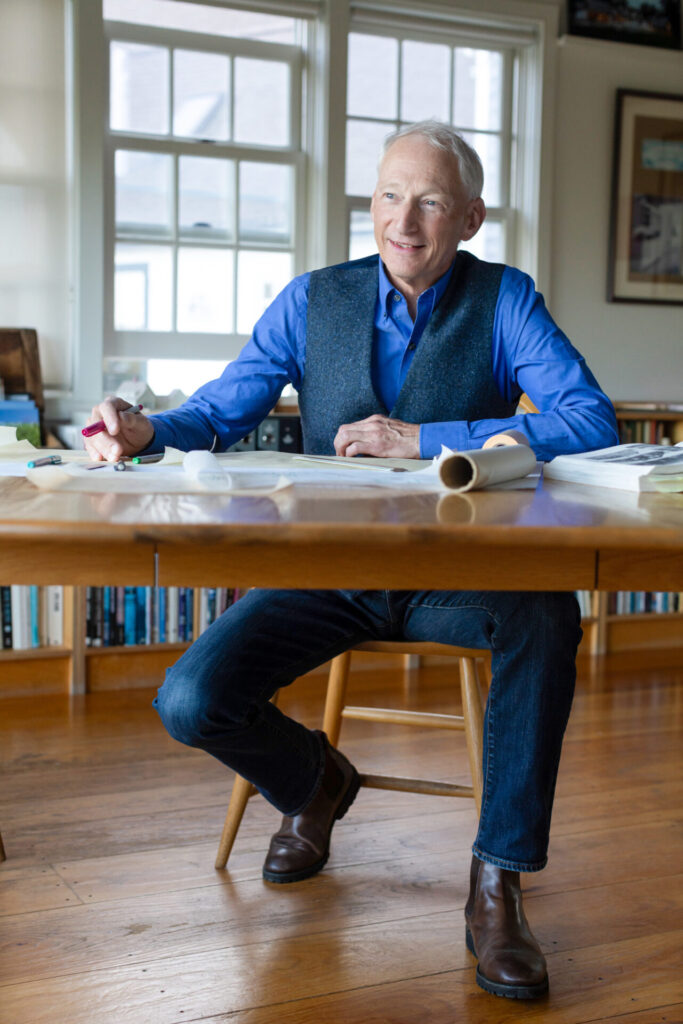Ben Nutter considered staying out West after graduating from the University of Oregon in the late 1970s. He liked it out there and connected with the region’s ahead-of-the-curve views on environmental design and sustainability. He could have had a great architectural career there, too. But Oregon was missing something that he couldn’t find anywhere but where he grew up in Topsfield.
“The family roots here are so strong, and the community roots here are so strong,” Nutter says. “It’s the power of people, the power of place, and the power of preservation. . . . That’s what I love, and that was here. And I didn’t see that there was any better opportunity in Oregon than was right under my nose in Topsfield and on the North Shore.”
It was a move that paid off. In coming home, Nutter built the kind of life and career that legacies are made of, from his dedication to historical and environmental preservation to his role as a mentor, brother, uncle, entrepreneur, volunteer, and friend.
Now, Nutter is celebrating the 40th anniversary of his architectural firm, Topsfield-based Benjamin Nutter Architects, and looking back on a journey that’s always been deeply tied to people, place, and preservation.
Place and a clarity of style
For Nutter, that ethos began with Nutter Farm, where he grew up in Topsfield. Today, he lives and works on three acres of land from that original property, which has been in his family since 1948, when his parents, John and Bunny, bought “30 acres, a barn, and a beat-up house.”
Over the years, they renovated the house and did “weekend farming,” planting and selling Christmas trees, owning horses, and spending time in the 1850s-era barn. They also built on the property, including a log cabin in the woods to hang out in.
That upbringing is reflected in Nutter’s work, which has included a number of historical preservation projects, like conserving the historic integrity of the 1792 Smith Bradbury house in Kennebunkport, Maine, while making it livable for a modern family, and restoring the 18th and 19th century structures at Towne Farm in Boxford.



“Later on, when the light bulb went on in my head, wondering why I was working on all these farm projects, I realized I probably spent more time in the barn as a young person than in the house,” Nutter said. “So it really informed and inspired who I became.”
Over the decades, he’s built or restored hundreds of properties throughout the region, from breathing new life into historic preservation projects to designing new constructions that take inspiration and meaning from the landscape and the client’s needs, like a Plum Island home that maximized space and ocean views while adhering to strict zoning and coastal requirements.
Through it all, Nutter is intentional about what he calls a “clarity of style” that informs every detail of every project he works on. If he and his team are working on a midcentury modern home, for instance, “we’re thinking all about the details that are appropriate to that house,” like horizontal lines. Similarly, Nutter used traditional New England materials, Georgian details, and farmhouse-style touches to make a newly constructed home look as though it had been on the property for centuries.
“It comes back to that clarity of style,” Nutter says. “We’re not trying to bring details from other projects and just paste them on to a new design.”
‘Preservation is sustainability’
Nutter also carries his passion for historic preservation into another realm: environmental sustainability and stewardship. He’s practiced this professionally, with projects like Meredith Farm in Topsfield, where he discovered pre-1800, 32-foot-long, oak timbers in the property’s 1793 barn and helped saved the structure from being torn down.

“Preservation is sustainability,” he says. “You’re not necessarily cutting down more trees to make more lumber. When you can take an existing structure and preserve it, make it useful . . . in the 21st century, why not? Why would you knock something down?”
That dedication to sustainability is carried into his personal and family life, too. The present-day, 20-acre Nutter Farm is co-owned by Ben and his sister, Stina MacDougall, and continues to be used for farming activities. Not only that, but the property has an Essex County Greenbelt conservation restriction, a voluntary legal agreement that prevents certain development on the land and protects others in perpetuity. In the case of Nutter Farm, it’s to preserve the land for agriculture.
People make it happen
With such talent and vision, Nutter could certainly have had a successful career in Oregon. But ultimately, it’s the people, family ties, and deep roots here on the North Shore that brought him back home. He’s remained committed to that, too, whether it’s mentoring Benjamin Nutter Architects’ interns, one of whom said he was “meant to be a mentor,” or serving on the board of Windrush Farm, a therapeutic equine riding center in North Andover.
“Those are all in the wheelhouse of how I grew up,” he says. “That’s who I am.”

